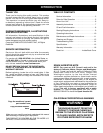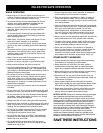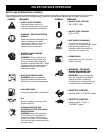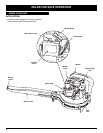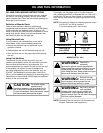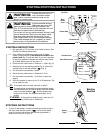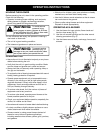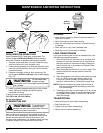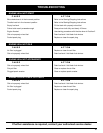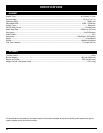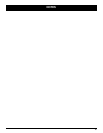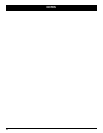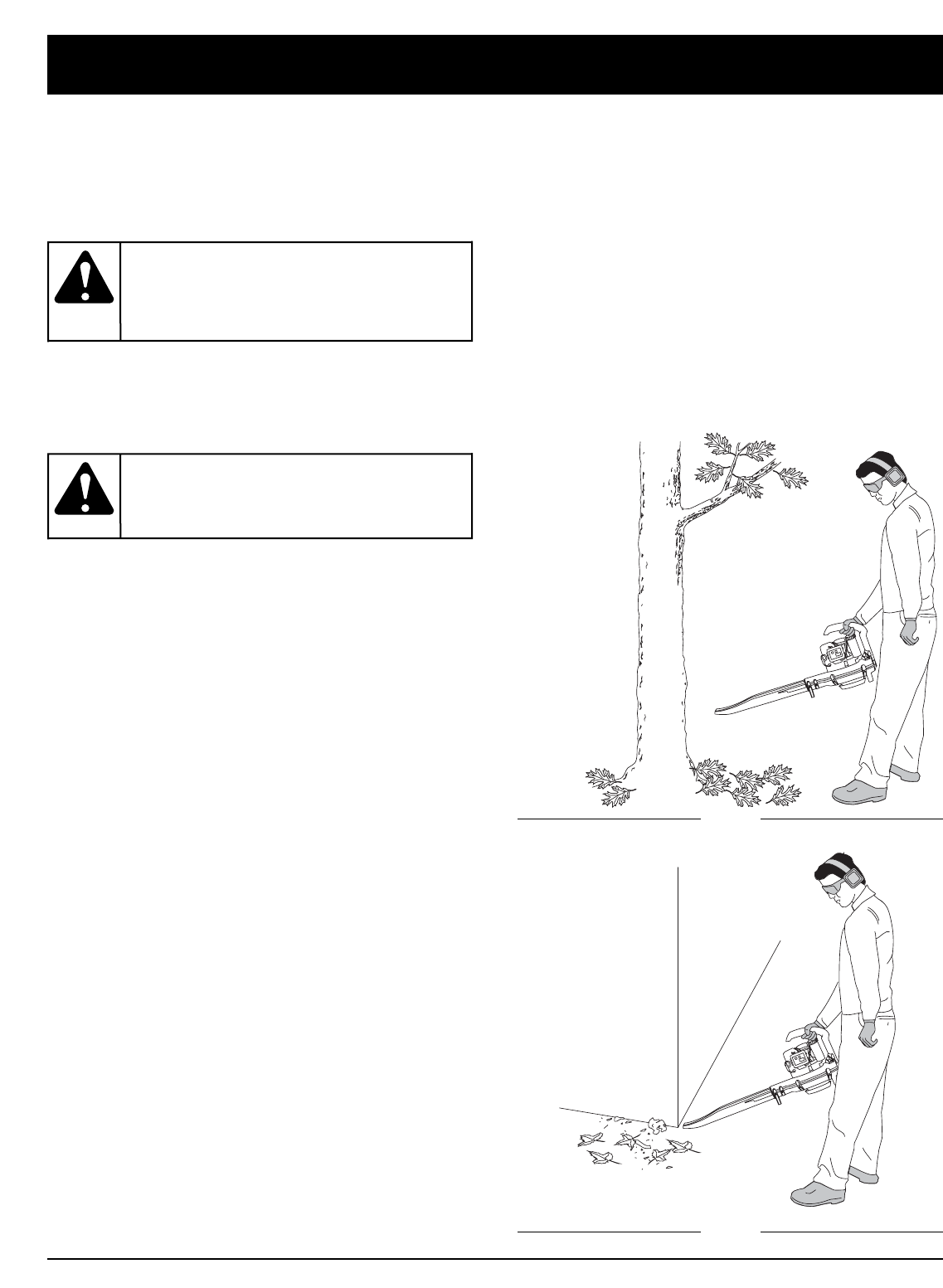
10
OPERATING INSTRUCTIONS
HOLDING THE BLOWER
Before operating the unit, stand in the operating position.
Check for the following:
• Operator is wearing proper clothing, such as boots,
safety glasses or goggles, ear/hearing protection,
gloves, long pants and long sleeve shirt
• If the conditions are dusty, the operator is wearing a
dust mask or face mask
• The unit is in good working condition
• The tubes and guards are in place and secure
OPERATING TIPS
• Assure the unit is not directed at anybody or any loose
debris before starting the unit.
• Verify that the unit is in good working condition. Make
sure the tubes and guards are in place and secure.
• Always hold the unit securely when operating. Keep a
firm grip on the handle.
• To reduce the risk of hearing loss associated with sound
level(s), hearing protection is required.
• Operate power equipment only at reasonable hours—
not early in the morning or late at night when people
might be disturbed. Comply with times listed in local
ordinances. Usual recommendations are 9:00 am to
5:00 pm, Monday through Saturday.
• To reduce noise levels, limit the number of pieces of
equipment used at any one time.
• To reduce noise levels, operate power blowers at the
lowest possible speed to do the job.
• Check your equipment before operation, especially the
muffler, air intakes and air filters.
• Use rakes and brooms to loosen debris before blowing.
• In dusty conditions, slightly dampen surfaces or use a
mister attachment when water is available.
• Conserve water by using power blowers instead of
hoses for many lawn and garden applications,
including areas such as screens, patios, grills, porches,
and gardens.
• Watch out for children, pets, open windows or freshly
washed cars, and blow debris safely away.
• Use the full blower nozzle extension so the air stream
can work close to the ground.
• Clean up after using blowers and other equipment.
Dispose of debris appropriately.
OPERATING AS A BLOWER
1 Use the blower for trees, shrubs, flower beds and
hard-to-clean areas (Fig. 5).
2. Use the unit around buildings and for other normal
cleaning procedures (Fig. 6).
3. Use the blower around walls, overhangs, fences and
screens.
Fig. 5
Fig. 6
To prevent serious
personal injury or
damage to the unit, make sure blower tubes
are in place before you operate the unit.
WARNING:
To avoid serious
personal injury,
wear goggles or safety glasses at all times
when operating this unit. Wear a face mask
or dust mask in dusty locations.
WARNING:



